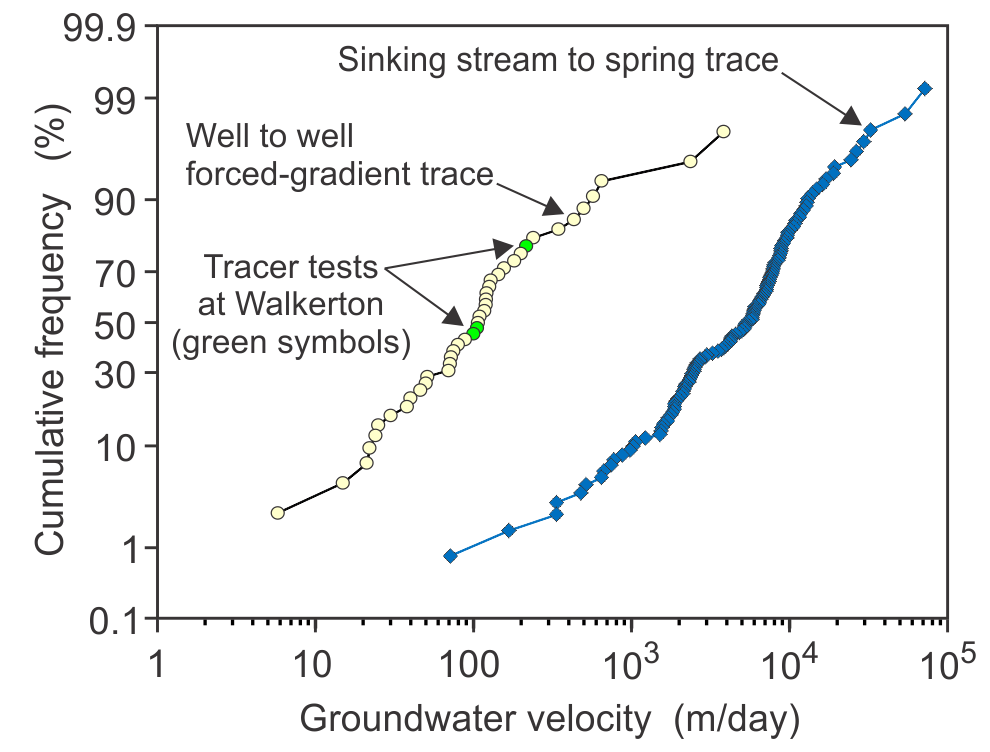
Awareness of karst aquifers in southern Ontario has grown since the 2007 Geological Survey report on karst (GRS005). Limestone and dolostone aquifers are widespread in southern Ontario, although they are mostly covered by 1 – 50 m of glacial sediments, so surface karst features are absent in many areas. Dissolution has usually enhanced the hydraulic conductivity to >10E-6 m/s, making the aquifers karstic by the definition of Freeze and Cherry (1979). These aquifers have dual porosity, and pumping tests usually give specific yields <0.01, reflecting the preferential flow in fractures and the very low matrix hydraulic conductivity. The high aquifer hydraulic conductivity makes the aquifers very productive, and they are commonly used for water supplies, including for large cities such as Guelph and Cambridge. The combination of high hydraulic conductivity and low effective porosity (often 0.0001-0.001) results in groundwater velocities often being 100 m/d or more, as shown by the figure above of 171 tracer tests carried out by Steve Worthington. These high velocities can result in bacterial contamination of water supplies, such as the serious contamination of the water supply at Walkerton in 2000, so adequate disinfection is important.